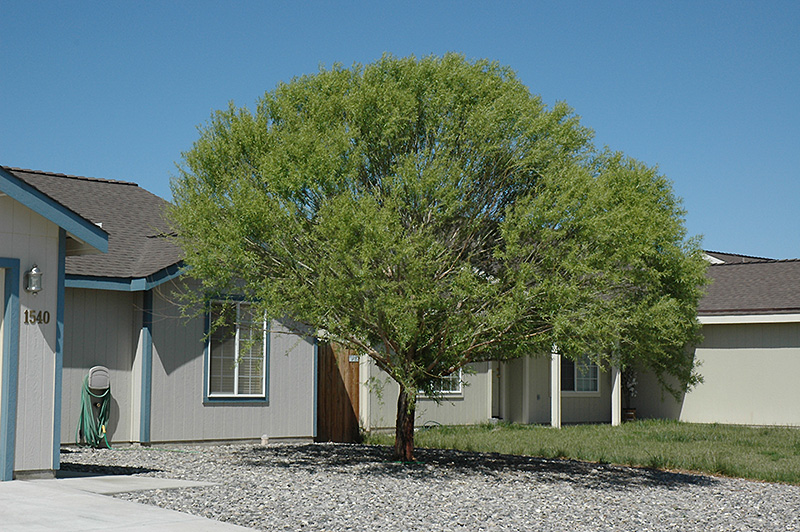Height: 40 feet Spread: 40 feet
Sunlight:
Hardiness Zone: 4b Other Names: Globe Willow, Chinese Willow Description: A densely branched, symmetrical rounded tree with graceful fine foliage; best used as a solitary for maximum effect; tends to drop branchlets, aggressive root system, so do not plant near homes Ornamental Features Navajo Willow is primarily valued in the landscape for its ornamental globe-shaped form. It has rich green foliage with white undersides. The narrow leaves turn gold in fall. The rough gray bark adds an interesting dimension to the landscape. Landscape Attributes Navajo Willow is a multi-stemmed deciduous tree with a more or less rounded form. Its relatively fine texture sets it apart from other landscape plants with less refined foliage. This is a relatively low maintenance tree, and is best pruned in late winter once the threat of extreme cold has passed. It has no significant negative characteristics. Navajo Willow is recommended for the following landscape applications; Planting & Growing Navajo Willow will grow to be about 40 feet tall at maturity, with a spread of 40 feet. It has a low canopy with a typical clearance of 2 feet from the ground, and should not be planted underneath power lines. It grows at a fast rate, and under ideal conditions can be expected to live for 40 years or more. This tree should only be grown in full sunlight. It is an amazingly adaptable plant, tolerating both dry conditions and even some standing water. It is considered to be drought-tolerant, and thus makes an ideal choice for xeriscaping or the moisture-conserving landscape. It is not particular as to soil type or pH. It is highly tolerant of urban pollution and will even thrive in inner city environments. This is a selected variety of a species not originally from North America.![]()
![]()
![]()
![]()
![]()
![]()
![]()
![]()
![]()
top of page
Louie's Nursery Menifee - Plant Finder
Characteristics
Applications
Features & Attributes
This tool is an online resource representing many of the varieties that we carry over the course of the season, and is intended for informational purposes only. Inventory varies seasonally, so we cannot guarantee that every plant will be in stock at all times - please contact the store directly for current availability. It does not include our entire selection of plants, so be sure to visit our store to see varieties that may not be represented on this list.
bottom of page
